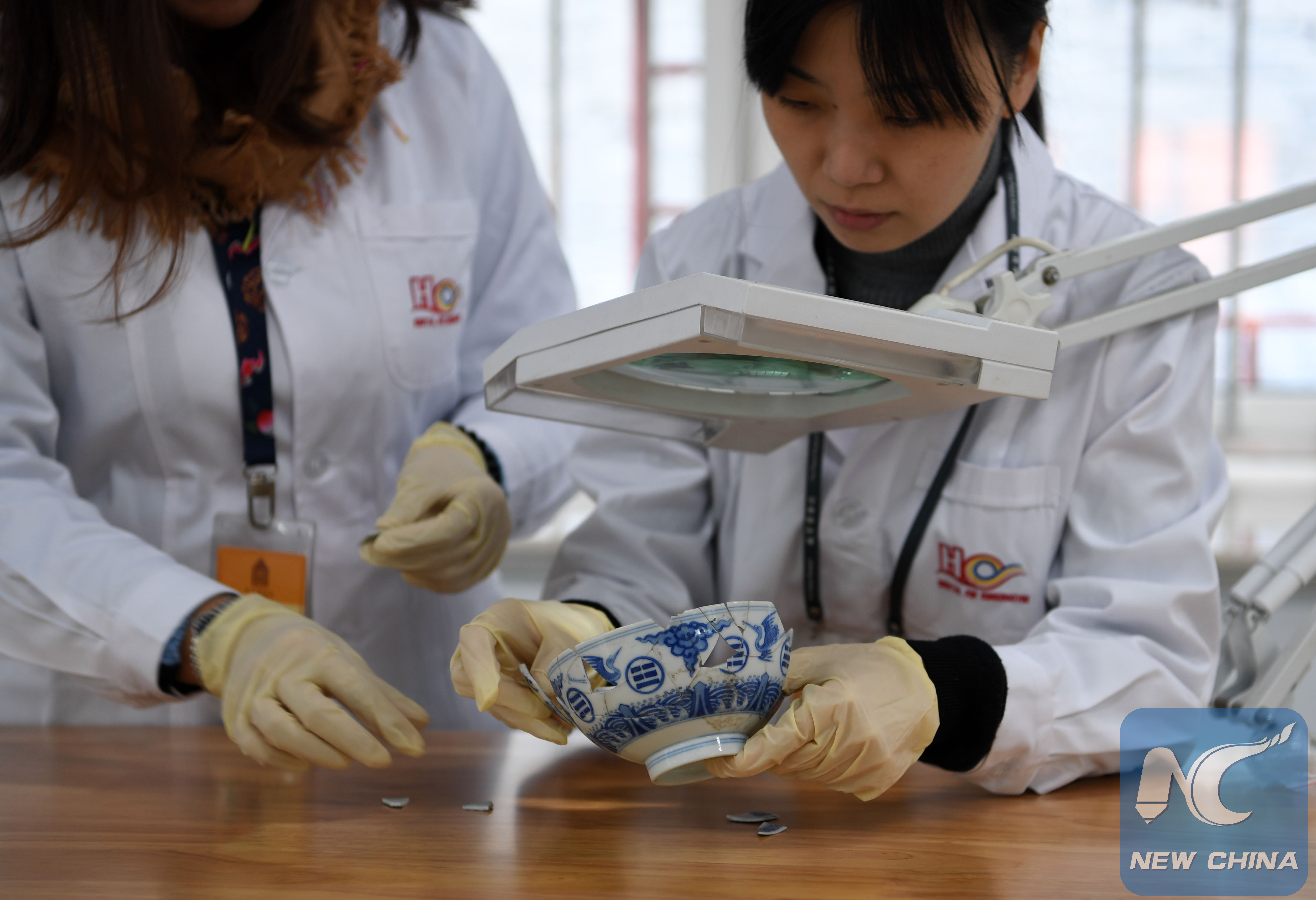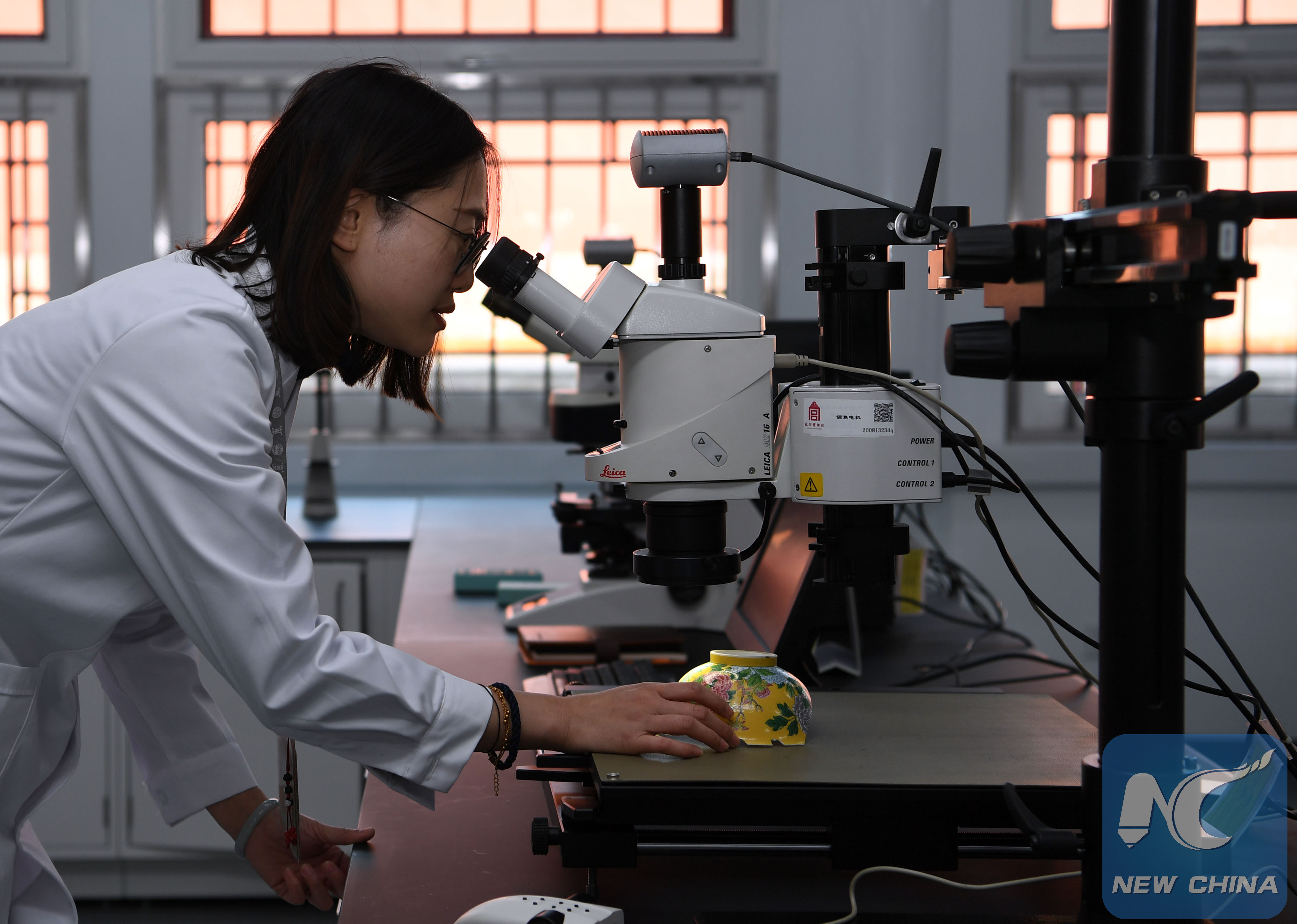
A relic-doctor in the Palace Museum takes photo with a wooden chair of the Ming dynasty (1368-1644)
Political advisor Song Jirong has been busy these days.
Besides participation in political consultation and deliberation of state affairs at the "two sessions", Song, deputy director of the Palace Museum, also discussed plans for more cultural relics restoration talent, with other members of the Chinese People's Political Consultative Conference (CPPCC), the country's top advisory body.
"Just like people need regular physical check-ups, cultural relics need to see doctors to prolong their lives, and this was the purpose of us building a hospital for relics in the Palace Museum," Song said.
The "hospital" Song referred to was established in December 2016. Located in the west of the Palace Museum, the facility covers 13,000 square meters and has the nation's most-advanced conservation studios.
With a laser technology lab, a joint venture by China and Greece to share conservation experiences, and a training center for the International Institute for Conservation of Historic and Artistic Works(IIC), the facility is also the largest cultural heritage conservation center in China.
The hospital of cultural heritage will open to the public in the first half of this year, and recruitment of volunteers will start soon, Song said.
However, more efforts are needed to increase public awareness of heritage protection, she added.
The Palace Museum, also known as the Forbidden City, was home to the royal court between 1420 and 1912. Today, it houses more than 1.8 million sets of cultural relics.
BETTER CONSERVATION
The idea of building a hospital for cultural heritage originated from Song majoring in chemistry.
"Before I came to the Palace Museum in 2006, I studied and worked at the Northwest University for 28 years, and my major was chemistry," Song said.

Relic-doctors are repairing a broken bowl
"I conducted research on the elementary particles of matter, and cultural relics are matter. Therefore, after I came to the Palace Museum, I reflected on how I could combine my knowledge with my job. I dug into traditional cultural heritage restoration skills to find out a scientific approach to prolong their lives," Song said. "In 2009, I raised the idea of setting up a hospital for conservation at an academic salon, and it received unprecedented support."
After the approval of the State Bureau of Cultural Heritage, the Palace Museum will build a 13,000 square meters architect, and the director of the Palace Museum has said the hospital could be built there.
Song said she then started to carefully design the facility.
"There is an elevator which can descend 20 meters underground to transfer the cultural relics to the restoration studios. The historical objects will be sent to different restoration studios after a thorough analysis and diagnosis," she said. "Meanwhile, we also think that after the completion of the conservation hospital we want tourists to be able to visit the place and watch how our doctors restore the cultural relics. So we have designed an aisle through the studios with glass windows."
BRING THEM ALIVE
The government work report delivered at the first session of the 13th National People's Congress, or the national legislature, said China would make efforts to develop its cultural industry.
The minister of culture, Luo Shugang, said the ministry would strengthen efforts to not only protect but also make cultural heritage popular, bringing them alive to better serve the needs of the people.
Museums need to attract more visitors to keep cultural heritage alive.

Modern technologies are used in the restoration of cultural relics
Song said last year that dozens of groups of visitors from both home and abroad had visited the conservation hospital, including the president of the IIC.
More than 20 leaders from other countries have also paid visits to the conservation hospital.
"They highly praised our government for making effort to protect our cultural heritage," Song said, adding that the hospital had received unprecedented support and investment.
However, there are still challenges. "Money is not the problem, but talent is," Song said. "The Palace Museum now has nearly 150 relic-doctors, and we plan to increase the number to 200 by 2020. But the number is far from enough."
"So, this time at the CPPCC session I discussed plans with officials from the Ministry of Education and the Organization Department of the Central Committee of the CPC to further promote the cultivation of talent," Song said, "We need craftsmen who not only have the skills but also research abilities."
Song believes increasing public awareness is the first step.
"After 100 years, we all know to get physical check-ups to keep our body healthy," Song said. "With the awareness of heritage protection raised, more solutions will come up to better preserve our national treasures."
(Photos by Jin Liangkuai/Xinhua)

